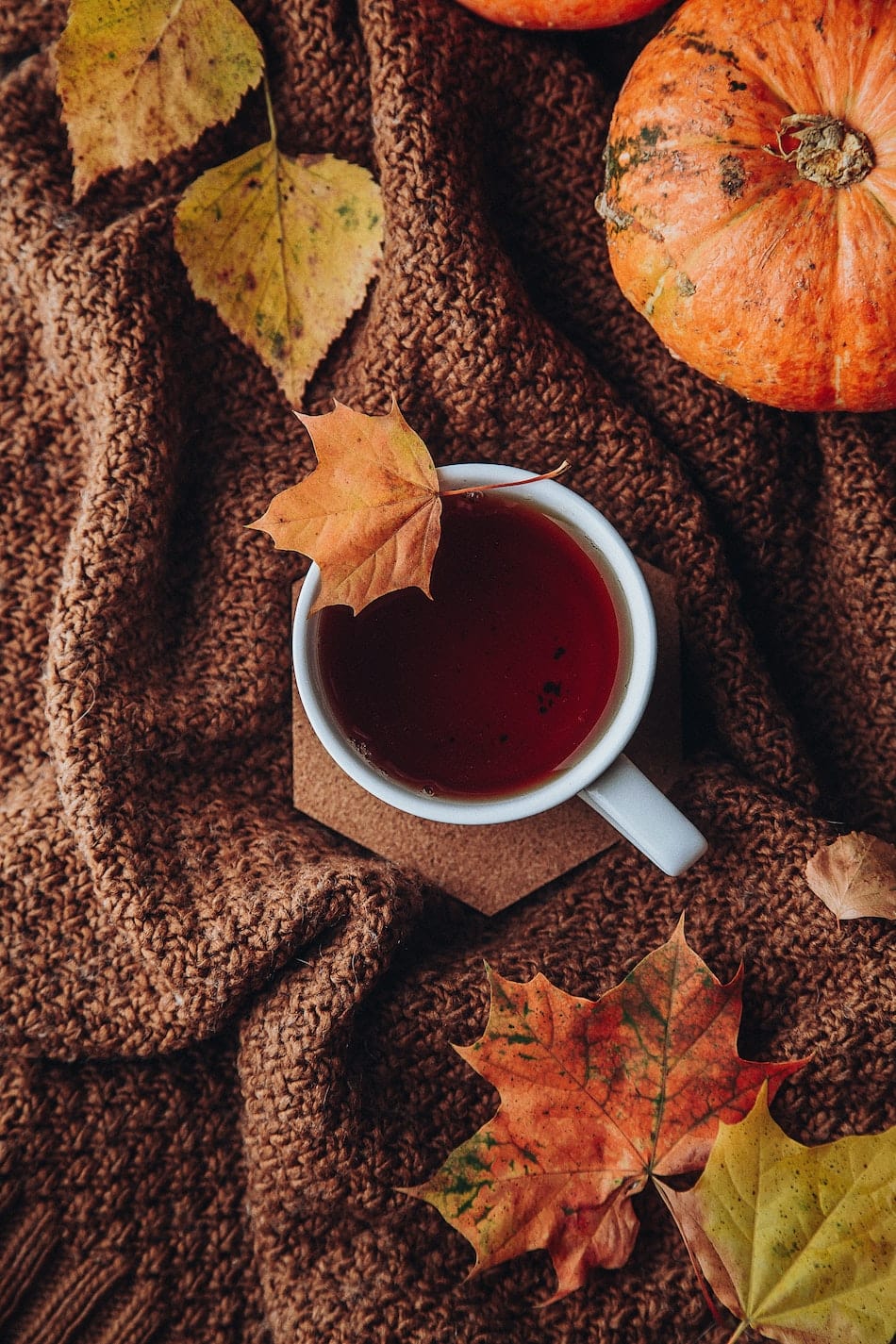
Did you know that the autumn to winter transition point is roughly October 31st / November 1st?
Yep! This seasonal shift is the cross-quarter holiday of All Hallow’s Eve (Samhain) and All Soul’s Day, and it marks the beginning of the winter season. This means the temperatures here in the Northern Hemisphere will continue to drop, deep freezes will come, and much of the natural world will go into hibernation.
Now, if you’re located in the Southern Hemisphere, you will be gearing up for spring, so things will be quite different for you! However, for those of us in the North, we can take this seasonal shift and learn from it.
For us, the autumn to winter transition is viewed as a time to start slowing down where we can so we can enjoy more rest. It’s also a time to draw inward and focus on the most valuable parts of life, such as friends, family, and legacy.
Think about it. We’re more inclined to stay inside our warm homes during winter. We bundle up in layers, eat warm and comforting foods, and gather with friends and family to celebrate holidays and traditions together. Perhaps we think of others and share meals or give gifts to show our affection. We celebrate our ancestors by remembering their lives and the lessons or traditions they passed on to us. We also evaluate our own lives by mining out the gems that we want to grow and develop. This way, we can, one day, pass them on to future generations.
Let’s quickly take a look at some symbols associated with these seasons.
Roots symbolize the season of autumn and water symbolizes the season of winter. Here, at the autumn to winter transition, these two symbols merge — teaching us a lot about navigating this seasonal shift.
Do you know why? If not, let me encourage you to explore these symbols a bit further in your journal.
- What do those symbols mean to you, and how do they represent each season?
- What thoughts, actions, and feelings do these seasonal symbols bring to mind?
- What can you glean from these seasonal symbols, and how can you incorporate more of that wisdom in your own life?
Grab your journal, and draw up a hot bath (don’t forget to include these Autumn Bath Salts). Brew yourself a cup of the Autumn Transitions tea blend below and light some candles. Also, don’t forget to put on some soft instrumental music so you can explore this autumn to winter transition a bit further.
Please know there are no right or wrong answers here. Feel free to keep your answers between you and your journal, or feel free to share your thoughts with me. I’d love to hear all about your insights, and as always, if you have any questions, I’m more than happy to try to answer those as well.
This activity can help you be more mindful of the seasonal shifts in the natural world which was created for us to thrive in. It can also help you align yourself a bit more with seasonal living. Remember, there’s no finish line here. This is your journey and your life. Make it what you will.
You can learn even more about seasonal autumn work in my blog post on Fall Focus here.
Now, before you dive into autumn work in your journal, let’s look at this herbal tea recipe. This seasonal tea recipe will help to make the upcoming autumn to winter transition a bit more meaningful for you. How great is that?!
An Herbal Tea Recipe for the Autumn to Winter Transition

This Autumn Herbal Tea is great for the fall season, particularly as it transitions into winter. This is due to all the warming, stimulating spices used here. I love that this blend includes chicory root to pull in some cooling energetics and liver-stimulating, slightly bitter qualities as well, as this helps to keep this formula nice and balanced.
Autumn Transitions Tea Blend
Ingredients:
- 3 parts of cinnamon (Cinnamomum verum) chips or bark , crushed and broken
- 2 parts of ginger (Zingiber officinale) root
- 1 part cardamom (Elettaria cardamomum) pods, whole
- 1 part chicory (Cichorium intybus) root
- 1 part pink peppercorns (Schinus terebinthifolius), whole
- 1 part star anise (Illicium verum) pods, whole
- 1 part clove (Syzygium aromaticum) buds, whole
Directions:
- Combine all ingredients in a glass jar. Label and seal the jar. Store in a cool, dry place when not in use.
Usage:
Place 1 tablespoon of herbs in a glass mug. Fill the mug 2/3 full of boiled water and cover for 10-15 minutes. Strain liquid through a fine-mesh sieve into another mug. Add honey and cream if you’d like, stir well, and enjoy!
Tips:
If you’d like to enhance the flavor of any of the whole spices in this blend, simply crush them to break them up more. You can use a mortar and pestle or a coffee grinder to do this. This will expose more surface area allowing more of their volatile oils (hello, flavor and aroma) to be released. However, please don’t do this when making your blend, or your spices will lose their flavor over time! Only do this step when you’re getting ready to brew your tea!
Okay, friends! I hope you enjoyed this little reminder to get started on your autumn work, filling your journal pages with your thoughts and ideas. I also hope this Autumn Transition tea blend serves you well and often during the autumn to winter transition.
Love and light,
Meagan